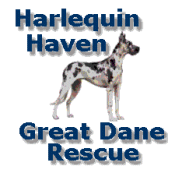|
Blastomycosis
Blastomycosis is a fungal infection caused by the
organism Blastomyces dermatitidis. It is exceedingly common in Ohio, Mississippi,
St. Lawrence river valleys, the Great lakes region, and along the eastern seaboard.
This mold occurs in sandy, acid soils
near river valleys or other waterways. It appears to be more common in the fall.
Blastomycosis infects dogs, people, and occasionally cats.
Any dog may contract blastomycosis under the right circumstances,
but some are higher risk. Hunting and sporting breeds are often
exposed to soil in wet areas. Male dogs are more likely to contract
blastomycosis than females. One study found that, while female dogs
may have better survival rates with therapy, they are more likely
to suffer relapses than males.
All dogs are susceptible to blastomycosis, but those at greatest risk for
infection are two-to-four year old intact males of hunting
or sporting breeds that weigh 50-75 pounds and are exposed to
river valleys or lakes during late summer or fall.
Dogs usually acquire blastomycosis by inhaling the spores from the
soil into the lungs. The mold spores become a yeast once inside the
body. In the lungs it causes a minor respiratory infection, that
typically goes away on its own. Puncture wounds can directly
inoculate the spores into the skin and may cause localized skin
infections. The most common form of
blastomycosis is the generalized form, which spreads by way of the bloodstream
or lymphatic system from the lungs into the eyes, brain, bone, lymph
nodes, urogenital system, skin, and subcutaneous tissues.
The clinical signs of blastomycosis depends on which organs are affected
and may include one or all of the following: anorexia,
depression, weight loss, fever (103 degrees or higher) that doesn't respond
to antibiotics, coughing, shortness of breath, exercise
intolerance, enlarged lymph nodes, eye disease, or skin lesions that
drain bloody or purulent material.
Diagnosis of blastomycosis involves finding the yeast organism in
samples from draining skin lesions or a lymph node. Chest x-rays and
a complete blood count (CBC) are important tests but are not diagnostic
by themselves. Fungal titers confirm the diagnosis.
About 65 percent of dogs diagnosed with blastomycosis do survive.
The treatment is long, complicated, and quite expensive. There
are also the risk of serious side effects from the medication.
Due to this, some owners elect to euthanize affected pets. Survival rates
for dogs that are treated is approximately 85 percent, but up to 25 percent
suffer relapses. Dogs with poor liver or kidney function
may not be able to tolerate the necessary medication. Dogs with brain
or eye involvement have a worse prognosis. If an eye is
involved, it usually must be removed since eyes don't respond well to
treatment and become a source of infection.
There are several drugs available to treat blastomycosis.
Unfortunately, they are all very costly, and all have a high
incidence of side effects, including kidney and liver damage.
Because these drugs are dosed on body weight, larger dogs will
have comparably larger drug costs. Blood tests and other veterinary
services should also be considered in the cost of treatment.
Total cost of well over $1000 are not unusual.
Blastomycosis is not contagious to people. However, if you have a
dog with this infection, it indicates that you may be at risk for
contracting the disease through a common environmental source.
Since it is the mold form that releases infective spores through the air,
you cannot get blastomycosis from the air around your dog
that is infected with the yeast form of the fungus.
Recent studies indicate some risk of exposure through wounds from
contaminated objects such as a sharp stick or a dog bite. Good
safety and hygiene precautions are highly recommended. Needless to say,
persons with deficient immune systems should not be handling
infected dogs.
All images and text on this site Copyright © 1998-2025 Harlequin Haven Great Dane Rescue, Inc. unless otherwise credited. Use of any image or text without written permission is expressly forbidden. All rights reserved.
|
|
|
